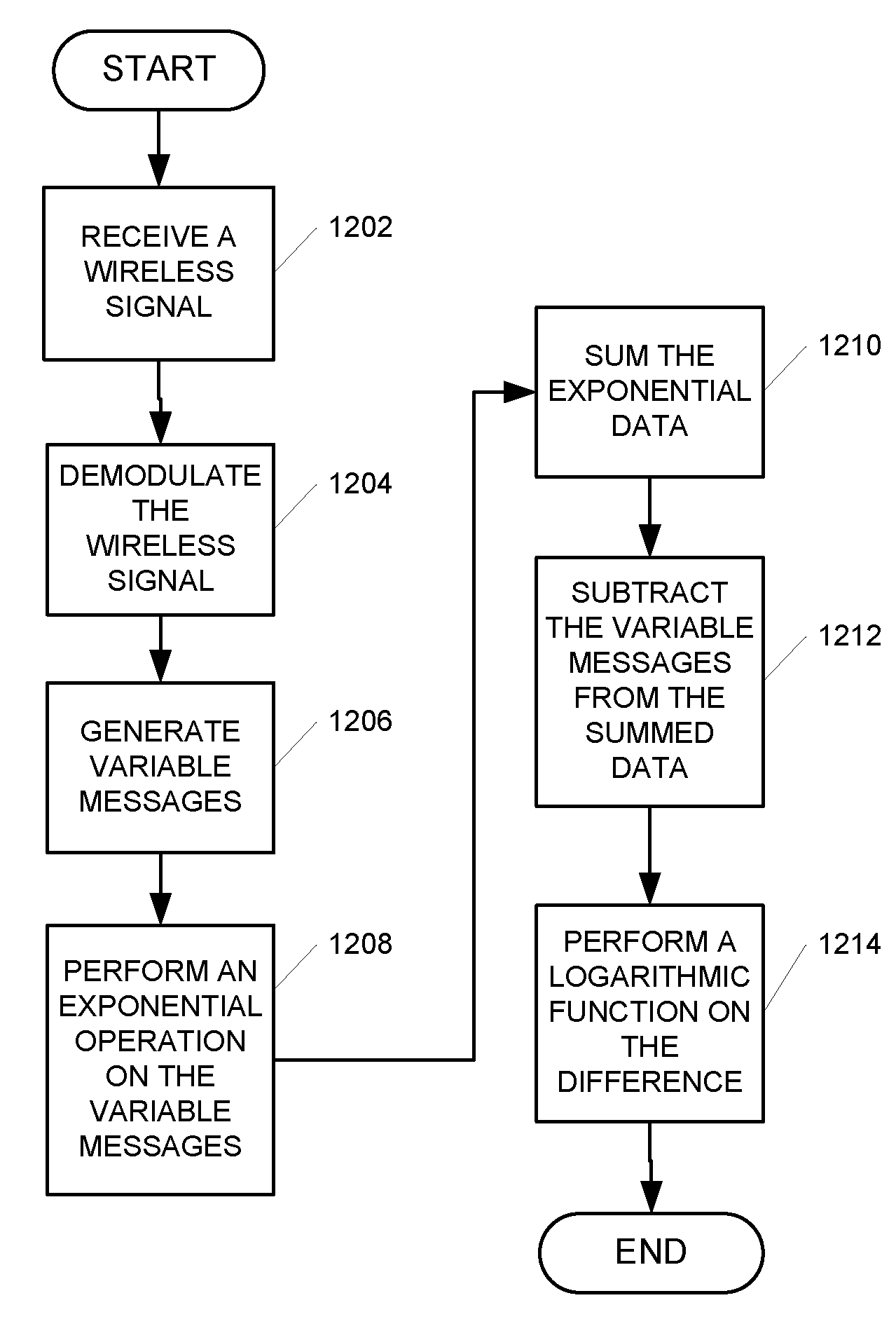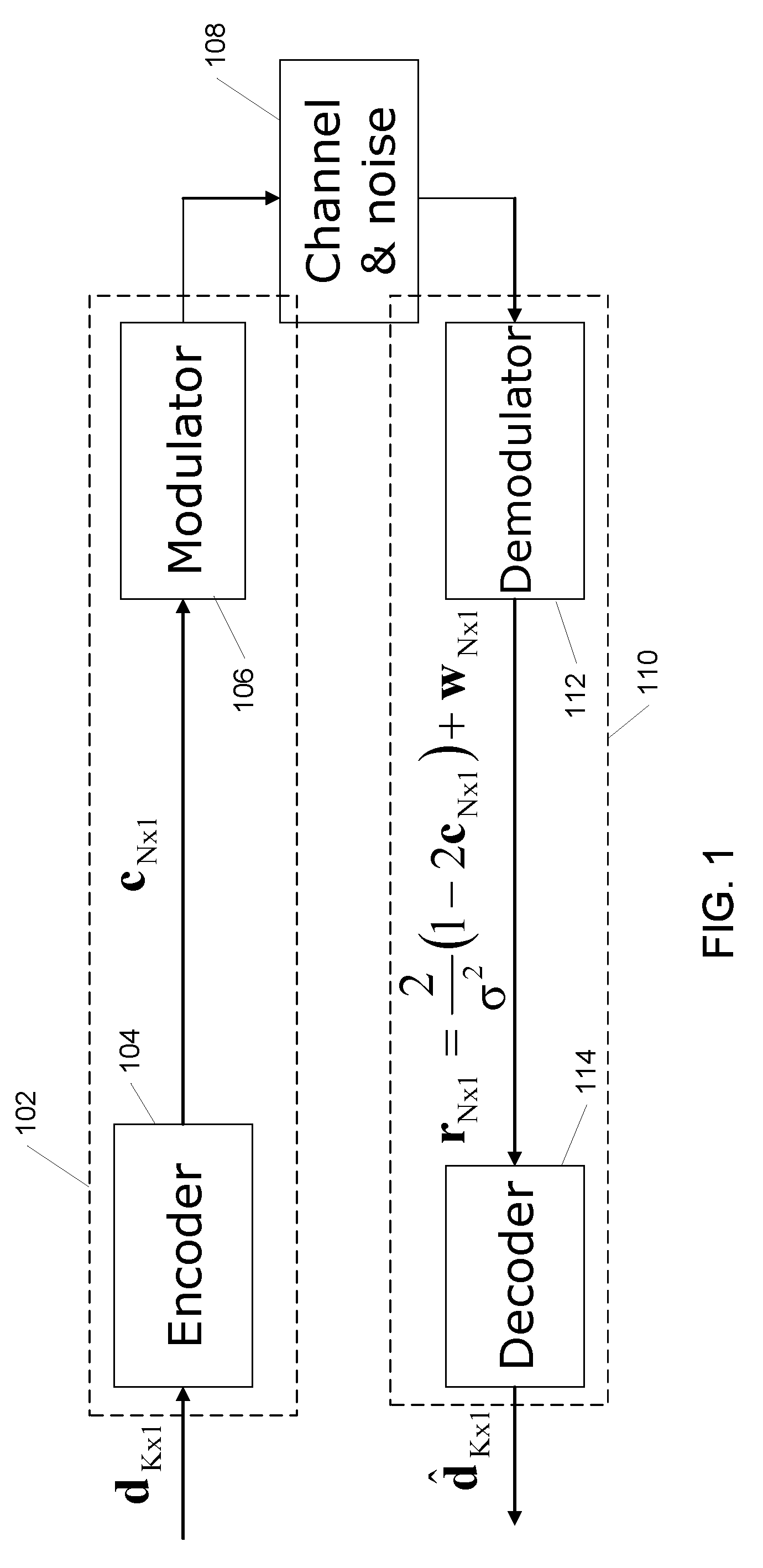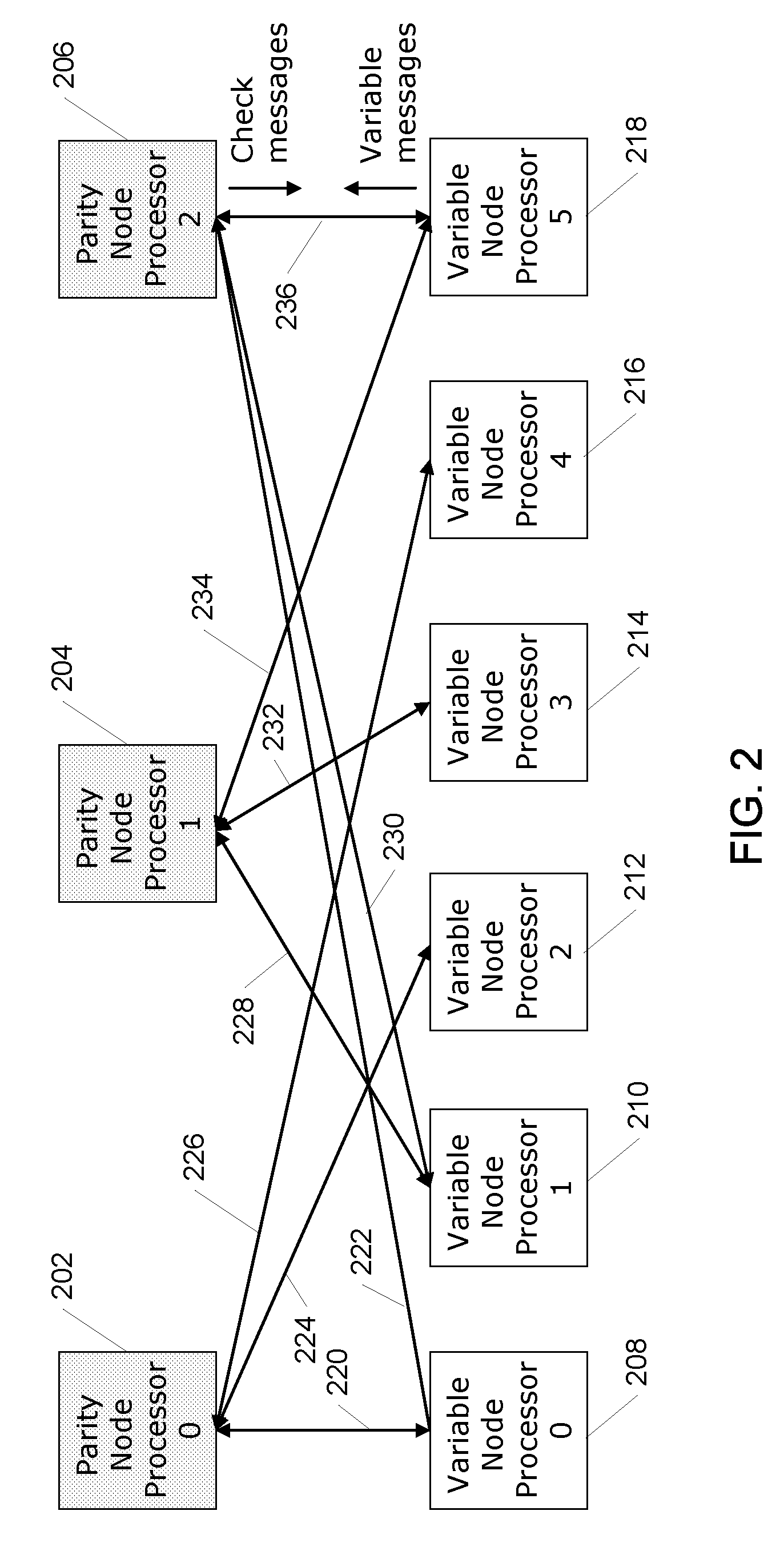Systems and methods for reduced complexity LDPC decoding
a ldpc decoding and low-density parity technology, applied in the field of low-density parity-check decoding, can solve the problems of requiring more resources, reducing the probability of information loss, and reducing the approximation error of min-sum algorithm (msa), so as to reduce the complexity of implementing a ldpc decoding and maintain accuracy. , the effect of reducing the approximation error of the min-sum algorithm
- Summary
- Abstract
- Description
- Claims
- Application Information
AI Technical Summary
Benefits of technology
Problems solved by technology
Method used
Image
Examples
Embodiment Construction
ng block, a shift register coupled with the input processing block, the shift register configured to store the variable massages for one clock cycle, an adder coupled with the accumulator and the shift register, the adder configured to subtract the output of the shift register from the output of the accumulator, and an output processing block coupled with the adder, the output processing block configured to perform a logarithm function on the output of the adder.
[0034]In still another aspect, a method for processing a received wireless signal can include receiving the wireless signal, removing a carrier signal from the wireless signal to produce a received signal, generating variable messages from the received signal, performing an exponential operation on the variable messages to generate exponential data, summing the exponential data subtracting the variable messages from the summed exponential data to form a difference, and performing a logarithmic operation on the difference.
[00...
PUM
 Login to View More
Login to View More Abstract
Description
Claims
Application Information
 Login to View More
Login to View More - R&D
- Intellectual Property
- Life Sciences
- Materials
- Tech Scout
- Unparalleled Data Quality
- Higher Quality Content
- 60% Fewer Hallucinations
Browse by: Latest US Patents, China's latest patents, Technical Efficacy Thesaurus, Application Domain, Technology Topic, Popular Technical Reports.
© 2025 PatSnap. All rights reserved.Legal|Privacy policy|Modern Slavery Act Transparency Statement|Sitemap|About US| Contact US: help@patsnap.com



